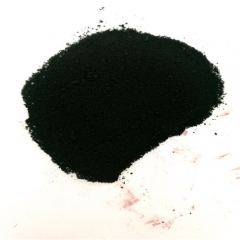Professional industry ceramic supplier, silicon nitride, silicon carbide, aluminum nitride and any other kinds of ceramics.
Magnesium diboride (MgB₂) is an ionic compound with a hexagonal crystal structure. It is an intercalated compound with alternating layers of magnesium and boron.

In 2001, researchers discovered that a seemingly inconspicuous compound called magnesium boride (magnesium diboride) transforms into a superconductor at temperatures slightly closer to the absolute temperature of 40K (-233°C). Its transition temperature is almost twice as high as that of other superconductors of the same type, and its actual operating temperature is 20~30K. This temperature can be achieved with liquid neon, liquid hydrogen, or closed-cycle freezers. These methods are simpler and less expensive than the industrial cooling of niobium alloys (4K) with liquid helium. Once doped with carbon or other impurities, magnesium boride maintains superconductivity as much or better than niobium alloys in the presence of a magnetic field or an electric current. Potential applications include superconducting magnets, power transmission lines and sensitive magnetic field detectors.
Magnesium diboride MgB2 powder overview
Magnesium diboride is an inorganic compound with the molecular formula MgB2. It is a dark grey insoluble solid. It is an ionic compound with a hexagonal crystal structure. It is an intercalation compound with alternating layers of magnesium and boron. This compound is of interest because of its superconductivity at 39 K (-234°C). In terms of composition, MgB2 is significantly different from most transition metal-based low temperature superconductors.
Scientists have known about magnesium diboride for nearly 50 years, but no one has studied the material's superconductivity — whether it can conduct electricity perfectly without resistance when it's cooled to temperatures close to absolute zero . That all changed in January 2001. Jun Akimitsu of Aoyama Gakuin University in Tokyo announced that he and his team found that magnesium diboride becomes superconducting at 39 Kelvin (-389 degrees Fahrenheit), almost the current metal. twice the conductor temperature. The news has experimenters around the world scrambling to replicate and confirm the Japanese findings.
Magnesium diboride transforms into a superconductor at a temperature slightly close to the absolute temperature of 40K (-233°C). Its transition temperature is almost twice that of other similar superconductors, and the actual operating temperature is between 20-30K. This temperature can be achieved with liquid neon, liquid hydrogen, or closed-cycle refrigerators. These methods are simpler and less expensive than the industry's use of liquid helium to cool niobium alloys (4K). Once doped with carbon or other impurities, magnesium boride remains as superconductive as niobium, or better, in the presence of a magnetic field or electric current.
Magnesium Diboride MgB2 Powder Application
Potential applications for magnesium diboride include superconducting magnets, power transmission lines, and sensitive magnetic field detectors.
Magnesium diboride is a new material that has attracted much attention. The research mainly focuses on the properties of synthesis and superconducting elements for industrial synthesis and sintering properties, room temperature electrical conductivity, corrosion resistance of liquid aluminum, corrosion resistance of fluoride resistance, etc. There are few studies, so MgB2 and its composite The material has cathode areas that are not used to cover the aluminum electrolysis.
MgB2 is easier to sinter and densify than TiB2, and its electrical conductivity basically meets the requirements of aluminum electrolysis cathodes. Therefore, MgB2 and its composites can be widely used as cathode materials for aluminum electrolysis.
Propellants, explosives, pyrotechnics: Unlike the incomplete combustion of elemental boron through a glass oxide layer that prevents the diffusion of oxygen, magnesium diboride burns completely in an oxygen or oxidant mixture. Therefore, magnesium boride has been proposed as a fuel for ramjets. Also, for the same reason, it has been suggested to use MgB2 in enhanced explosives and propellants.
Magnesium diboride MgB2 powder price
The price of magnesium diboride varies randomly with factors such as production cost, transportation cost, international situation, exchange rate, and changes in the market supply and demand of molybdenum boride powder MgB2. Tanki New Materials Co., Ltd. aims to help industries and chemical wholesalers find high-quality, low-cost nanomaterials and chemicals by providing a full range of customized services. If you are looking for magnesium diboride materials, please feel free to contact for the latest magnesium diboride prices.
Magnesium Diboride MgB2 Powder Supplier
As a global magnesium diboride supplier, Tanki New Materials Co., Ltd. has extensive experience in the performance, application and cost-effective manufacturing of advanced engineering materials. The company has successfully developed a series of powder materials (including oxides, carbides, nitrides, single metals, etc.), high-purity targets, functional ceramics and structural devices, and provides OEM services.
| Magnesium Boride Properties | |
| Other Names | magnesium boride powder, MgB2, MgB2 powder, |
| agnesium diboride | |
| CAS No. | 12007-25-9 |
| Compound Formula | MgB2 |
| Molecular Weight | 45.927 |
| Appearance | Gray to Black Powder |
| Melting Point | 830 °C |
| Boiling Point | N/A |
| Density | 2.57 g/cm3 |
| Solubility in H2O | N/A |
| Exact Mass | 46.003653 |
| Monoisotopic Mass | 46.003653 |
| Magnesium Boride Health & Safety Information | |
| Signal Word | N/A |
| Hazard Statements | N/A |
| Hazard Codes | N/A |
| Risk Codes | N/A |
| Safety Statements | N/A |
| RTECS Number | N/A |
| Transport Information | NONH for all modes of transport |
| WGK Germany | 3 |
